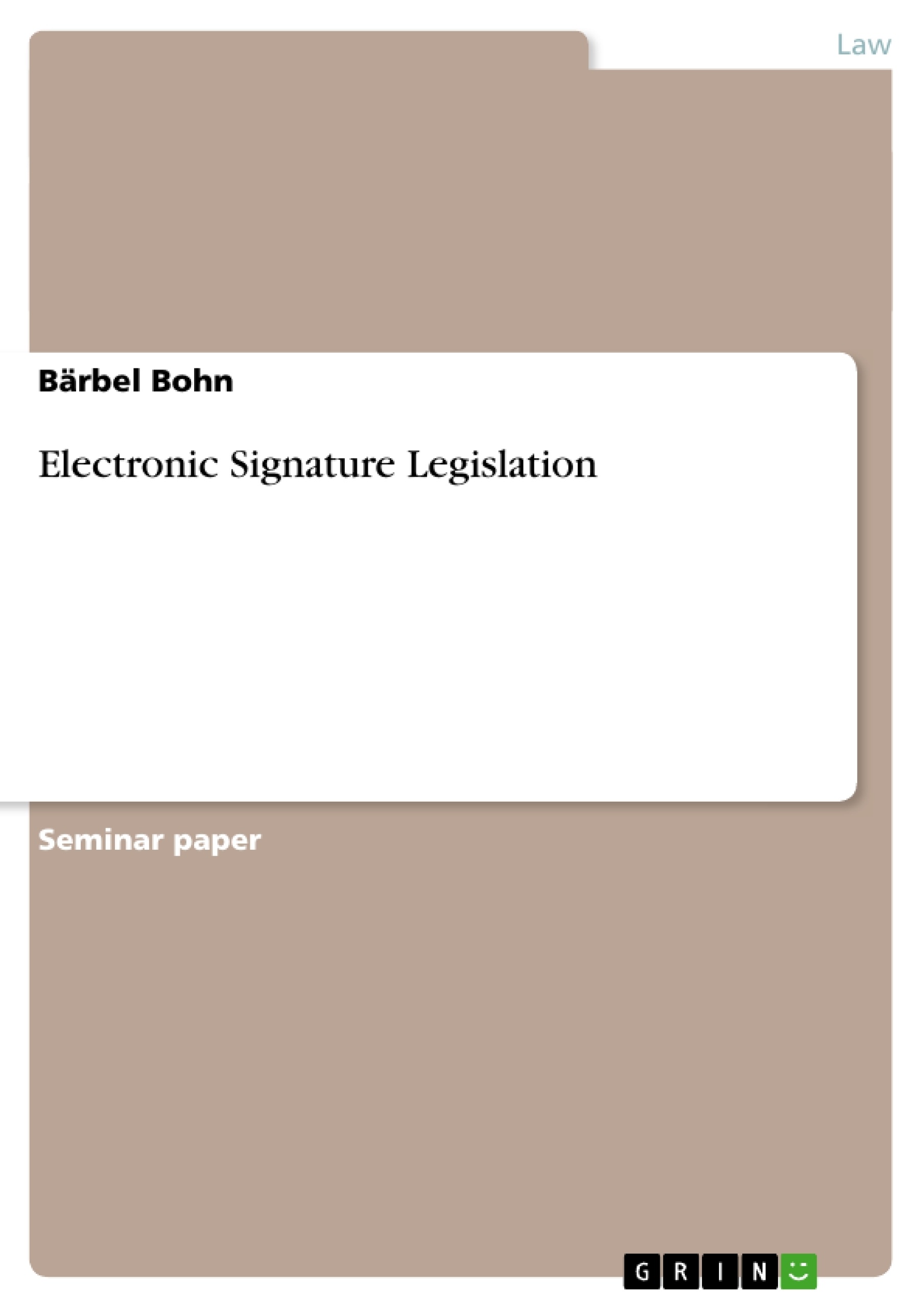As technology develops and the use of computers continues to increase, businesses and people will enter into increasing numbers of contracts based more and more on electronic communications. Electronic commerce though is a broad term that encompasses electronic data interchange (EDI), on-line retailing, and electronic funds transfer (ETF) among other types of transactions.
This paper is intended to discuss the need of a more detailed legislation for the Australian Electronic Transaction Act (Cth) 1999 (ETA) in relation to digital signatures. The Key question of this assignment is, if the details of an electronic signature framework should be specified by statute, left to regulation by administrative agencies or simply left to the marketplace.
Firstly I will describe the different legislative approaches of jurisdictions around the world. Then I’ll have a closer look at the Australian ETA and try to classify them in one of the categories. An analysis of the ETA follows and I will point out the advantages and disadvantages of this Act. Following is a discussion about which legislative approach – explained earlier – is preferable and if there is need for a more detailed legislation for Australia. Furthermore the issues of trust and the rule of third parties in relation to digital signatures are debated. A very important issue in this context involves the allocation of liability and risk of persons using digital signatures, including certification authorities. At the end I recommend the most suitable approach for the Australian Federal Government.
Inhaltsverzeichnis (Table of Contents)
- A) Introduction
- B) Requirements for e-commerce
- C) Legislative approaches
- 1) Prescriptive
- 2) Criteria-based
- 3) Signature-enabling
- D) Electronic Transactions Act 1999 (Cth)
- E) Trust and the role of third parties
- 1) Public key infrastructure
- 2) Certification authorities
- 3) Key security and allocation of risks
- F) Discussion
- G) Recommendation
Zielsetzung und Themenschwerpunkte (Objectives and Key Themes)
This assignment provides a comprehensive overview of electronic signature legislation, its role in facilitating e-commerce, and its impact on legal frameworks. It examines the requirements for e-commerce and explores different legislative approaches to electronic signatures.
- The importance of electronic signatures for e-commerce
- Different legislative approaches to electronic signatures
- The role of trust and third parties in e-commerce
- The impact of electronic signatures on legal frameworks
- The need for uniformity in electronic signature legislation globally
Zusammenfassung der Kapitel (Chapter Summaries)
- A) Introduction: Introduces the topic of electronic signature legislation and its significance in the digital age.
- B) Requirements for e-commerce: Outlines the essential elements required for successful e-commerce, highlighting the crucial role of electronic signatures in this context.
- C) Legislative approaches: Explores various legislative approaches to regulating electronic signatures, examining prescriptive, criteria-based, and signature-enabling models.
- D) Electronic Transactions Act 1999 (Cth): Provides a detailed analysis of the Electronic Transactions Act 1999 (Cth), focusing on its provisions relating to electronic signatures.
- E) Trust and the role of third parties: Examines the importance of trust in e-commerce and the role of third parties, including public key infrastructure, certification authorities, and key security measures, in establishing and maintaining trust.
- F) Discussion: Presents a critical discussion of the issues and challenges surrounding electronic signature legislation, its implications for legal frameworks, and the need for global harmonization.
Schlüsselwörter (Keywords)
Electronic signatures, e-commerce, legislative approaches, Electronic Transactions Act 1999 (Cth), trust, third parties, public key infrastructure, certification authorities, legal frameworks, global harmonization.
- Citation du texte
- Bärbel Bohn (Auteur), 2005, Electronic Signature Legislation, Munich, GRIN Verlag, https://www.grin.com/document/41302



